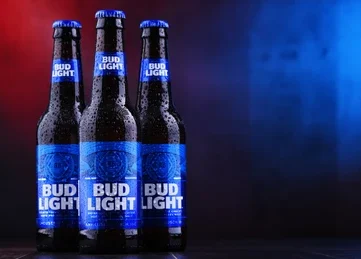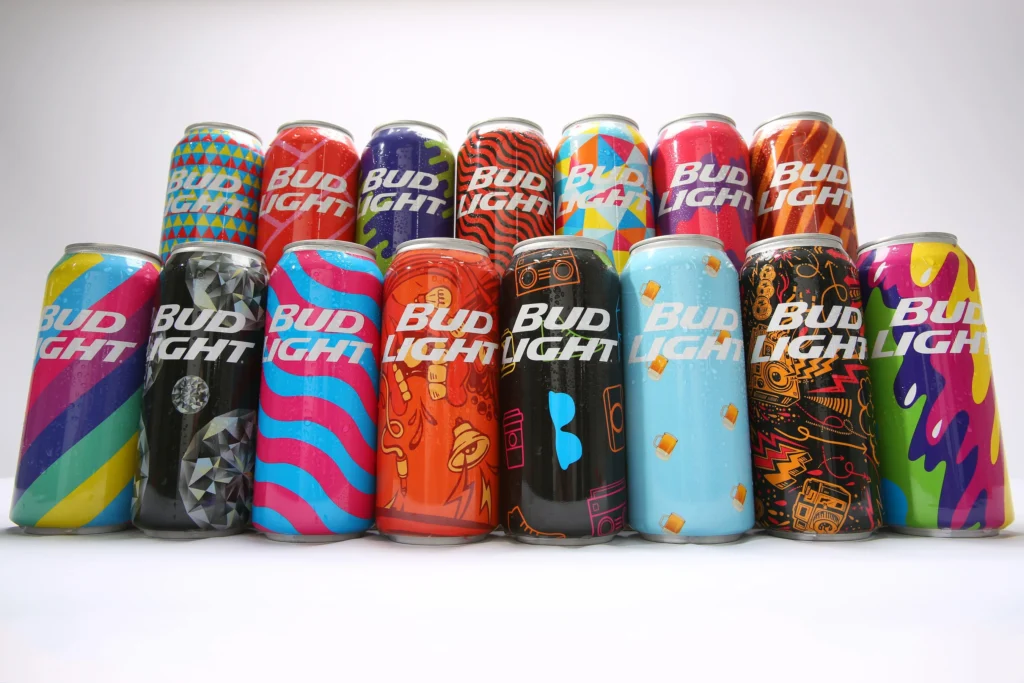Introduction
In the world of beer packaging, few icons are as recognizable and enduring as the Bud Light can. With its sleek layout and awesome branding, the Bud Light can have grown to be synonymous with casual gatherings, sporting occasions, and true times with pals. But at the back of its familiar facade lies a wealthy record of evolution, innovation, and edition to converting tastes and tendencies. In this text, we delve into the journey of Bud Light cans, from their humble beginnings to their modern-day repute as a staple of the beer industry.
Origins of the Bud Light Can
The story of the Bud Light started offevolved in 1982 when Anheuser-Busch introduced Bud Light, a mild beer version of its flagship emblem, Budweiser. As part of its release strategy, Bud Light becomes packaged in aluminum cans, a choice that might be instrumental in shaping its identification and reputation. The preliminary design featured a blue and white coloration scheme, with the Bud Light logo prominently displayed towards a backdrop of silver.
Classic Designs and Iconic Logos

Throughout the Eighties and 1990s, Bud Light cans underwent several layout iterations, each aimed at enhancing logo visibility and patron appeal. One of the most memorable designs from this period featured the Bud Light script brand in formidable, uppercase letters, observed using the long-lasting blue ribbon motif. This layout has become synonymous with the logo and remains ingrained in the memories of many beer lovers.
As Bud Light solidified its role as a leading mild beer in the marketplace, its cans have become a canvas for creative experimentation. Limited-version releases featured special graphics, tie-ins with sports occasions, and collaborations with artists and celebrities. These specific designs brought a collectible detail to Bud Light cans, in addition to improving their attraction amongst purchasers.
The Shift Towards Modernization
By the turn of the 21st century, consumer choices and advertising tendencies had been evolving, prompting Anheuser-Busch to reconsider the layout of this. In 2013, the agency unveiled a sleeker, extra present-day look for its packaging, marking a departure from the traditional blue and white shade scheme. The new design featured a silver history with the Bud Light logo rendered in a cutting-edge font, accented using subtle blue highlights.
The updated cans had been met with mixed reactions from customers, with some embracing the change as a sign of progress and others expressing nostalgia for the classic designs of yesteryear. Despite the preliminary resistance, the modernized Bud Light cans progressively received recognition and became an image of the emblem’s commitment to innovation and relevance in a competitive market.
Embracing Sustainability and Environmental Responsibility
In current years, the beer enterprise, like many others, has faced growing scrutiny over its environmental effect, in particular concerning packaging waste. In reaction to developing issues about sustainability, Anheuser-Busch embarked on an undertaking to lessen the environmental footprint of its products, including this.
One of the key initiatives brought through the organization turned into the transition to more green packaging materials. In 2020, Anheuser-Busch introduced plans to put money into aluminum recycling infrastructure and boom the usage of recycled content in its aluminum cans. These efforts were aimed at minimizing waste and promoting a round financial system in which materials are reused and recycled to lessen environmental stress.
Additionally, Anheuser-Busch applied measures to optimize the layout and production tactics of Bud Light cans to decrease strength consumption and carbon emissions. By adopting sustainable practices at some point in its delivery chain, the organization sought to uphold its commitment to environmental obligation whilst preserving the first-rate integrity of its products.
Innovation in Packaging Technology

Beyond sustainability efforts, Anheuser-Busch has endured innovating within the realm of packaging generation, searching to decorate the patron enjoy, and differentiate its merchandise within the market. One first-rate advancement has been the advent of resealable and reclosable can designs, permitting customers to enjoy their liquids at their own pace without stress about waste or spillage.
Another area of recognition has been the incorporation of clever packaging capabilities, together with QR codes and augmented fact stories, to engage customers and offer them with additional fee beyond the product itself. These interactive elements enable Bud Light to hook up with purchasers on a deeper level, fostering logo loyalty and riding repeat purchases.
Frequently Asked Questions (FAQs)
What are Bud Light cans manufactured from?
It are commonly fabricated from aluminum, a lightweight and recyclable fabric that enables preserving the freshness and taste of the beer at the same time as imparting comfort and portability.
Are Bud Light cans recyclable?
Yes, It are recyclable. Aluminum is one of the most recyclable substances on earth, and recycling aluminum cans enables conserve power and reduce waste.
How has the layout of Bud Light cans advanced over the years?
The layout of Bud Light cans has developed from the classic blue and white shade scheme to a more modern-day and minimalist aesthetic. Over the years, Bud Light cans have featured various photos, trademarks, and restrained-edition designs, reflecting changes in patron tastes and advertising traits.
Are there any collectible or restricted-version Bud Light cans?
Yes, Anheuser-Busch has released numerous collectible and restricted-version Bud Light cans over time, featuring special photos, tie-ins with sports events, and collaborations with artists and celebrities. These specific designs add a collectible element to Bud Light cans and enchantment to avid collectors and enthusiasts of the emblem.
What efforts are being made to make Bud Light cans greater sustainable?
Anheuser-Busch has implemented numerous projects to enhance the sustainability of Bud Light cans, consisting of increasing the use of recycled content material in aluminum cans, investing in aluminum recycling infrastructure, and optimizing production procedures to minimize electricity intake and carbon emissions.
Conclusion
The journey of Bud Light cans reflects the evolution of the beer industry and customer alternatives over the past four decades. From their humble beginnings as aluminum vessels for a brand-new mild beer to their current status as symbols of innovation and sustainability, Bud Light cans have remained a regular presence in the lives of beer fans around the world.
As Anheuser-Busch keeps conforming to converting market dynamics and societal traits, one factor remains positive: the Bud Light can hold to conform, reflecting the spirit of innovation and the timeless attraction of one of the global’s maximum liked beer brands. So whether you’re cracking open a classic blue and white can or savoring the glossy layout of a cutting-edge Bud Light, one thing is for sure – suitable times are anticipated inside.

